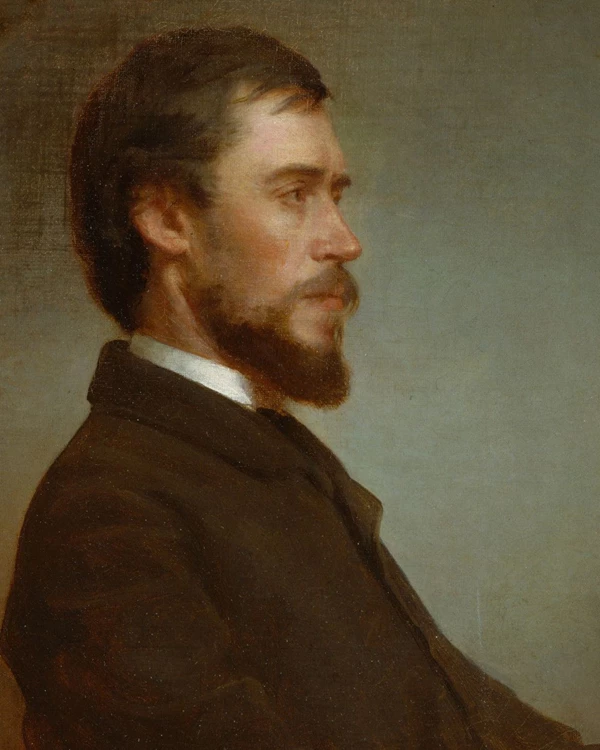Last updated: February 11, 2022
Person
Sanford Robinson Gifford

Sanford Gifford was born in Greenfield, New York to a prosperous family that supported and encouraged his artistic leanings. He attended Brown University from 1842-1844, but did not graduate, but instead moved to New York City in 1845 to study drawing, perspective and anatomy with British watercolorist and drawing-master, John Rubens Smith. He also attended anatomy classes at the Crosby Street Medical college and took drawing classes at the National Academy of Design. Under Smith, Gifford trained to be a portrait painter, but inspired by the work of Thomas Cole, redirected his attention toward landscapes.
Gifford spent the summer of 1846 touring and sketching in the Shawangunk, Catskill, and Berkshire mountains. By 1847, he had begun to show his work at the American Art-Union and the National Academy of Design in New York, where he was elected an associate in 1850 and an academician in 1854.
In 1855, Gifford spent two-and-a-half years in England, Scotland, France, the Low Countries, Germany, Switzerland, and Italy, studying art and sketching. While there, Gifford painted his first major work, Lake Nemi (Toledo Museum of Art), establishing his reputation as a master of light and atmosphere.
When he returned to the United States in 1857, Gifford rented rooms at the Tenth Street Studio Building in New York City where Albert Bierstadt, Frederic Church, and several other landscape painters became his neighbors. Over the next few years, he made regular summer sketching trips to the Catskills and the Adirondacks in New York, the Green Mountains in Vermont, and the White Mountains in New Hampshire and Maine. During the early years of the Civil War, Gifford served in New York's Seventh Regiment as a national guardsman stationed in defense of Washington, D.C. and Baltimore in the summers of 1861–63. Gifford’s reputation rose rapidly through the Civil War years, during which time he created some of his masterworks amidst service in the war. Soon after, two of Gifford's paintings were chosen, along with one by Winslow Homer, to represent American art at the Exposition Universelle in Paris in 1867.
In 1868 Gifford went abroad for a second and last time, spending more than a year traveling in Europe and the Middle East. In 1870 Gifford visited Colorado with Worthington Whittredge and John Frederick Kensett, and accompanied a United States Geological party under Dr. Hayden in the exploration of Wyoming, Utah, and the Colorado Territories. Gifford then continued along the Northwest Coast, traveling through California, Oregon, British Columbia, and Alaska, producing only a few western landscape subjects.
Gifford died from respiratory ailment in 1880. A founder of The Metropolitan Museum of Art in 1870, Gifford was honored by the institution’s first monographic retrospective in 1881.
Sources
National Gallery of Art
Smithsonian American Art Museum (Avery and Kelly, eds., Hudson River School Visions: The Landscapes of Sanford R. Gifford, 2003).
Archives of American Art, Smithsonian Institution
Kevin J. Avery, “Sanford Robinson Gifford (1823–1880).” Heilbrunn Timeline of Art History. New York: The Metropolitan Museum of Art.
